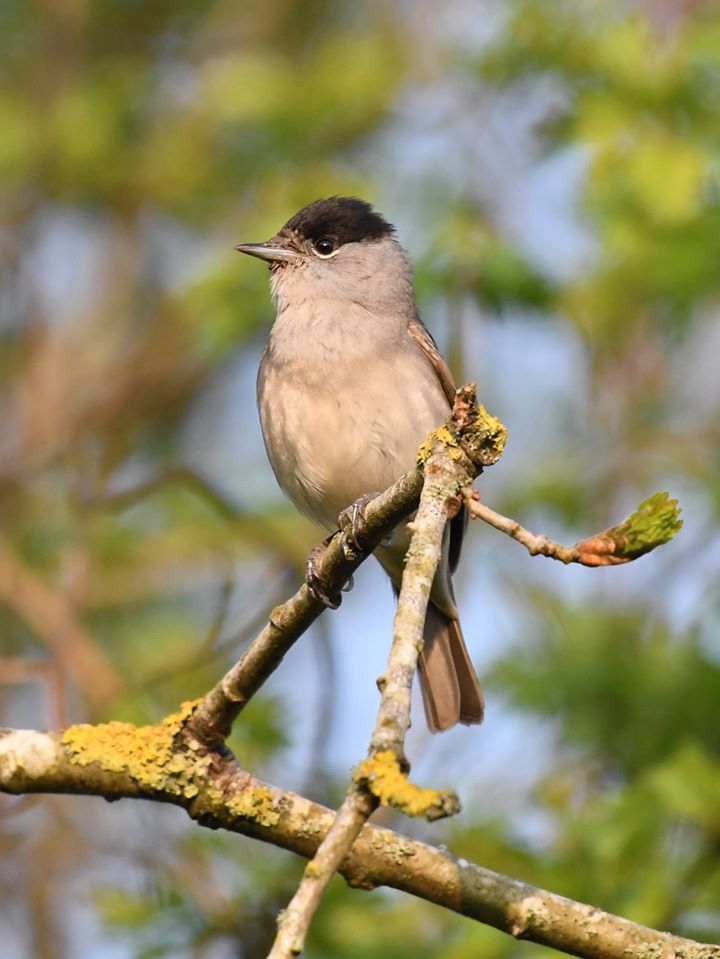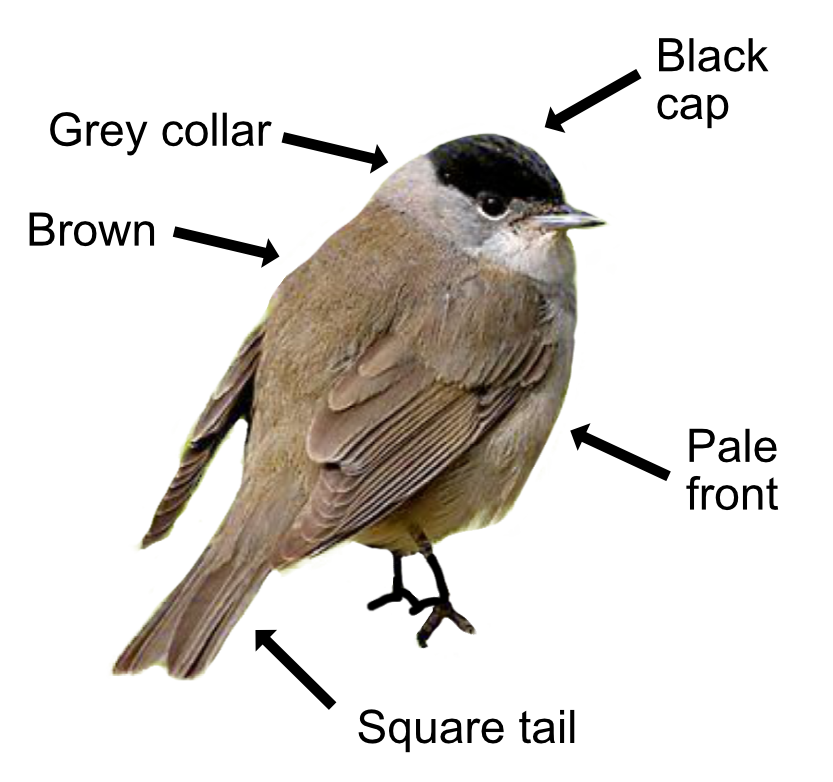
The Blackcap is many people's favourite songbird. John Clare (a poet born in Helpston near Peterborough) wrote a Blackcap poem and called it the March Nightingale. It is a bird that arrives and sings earlier than the Nightingale and is every bit as melodious. The Blackcap is a very cocky operatic tenor. A small, stocky woodland bird slightly smaller than a sparrow, although one of the larger warblers.
The male is plain grey brown above, paler below, with a rounded black cap (hence the name), and a squared off tail. He has a pale grey collar when looked at from the rear. The female is similar but has a reddish brown cap instead of black as she doesn't want to look like a puritan. Young Blackcaps are a duller version of mum.
Blackcaps are more often heard than seen as they tend to lurk in deep cover and only occasionally come to garden feeders. They like woodlands, copses, thickets and other bushy places including parks. Anywhere there are lots of places to hide. The Blackcap's song has rich, clear notes and is loud. This is someone who has clearly been trained to sing opera. The song can sound a bit like a speeded up Blackbird's, a lovely flutey warble with the odd buzzing note thrown in. Male Blackcaps can develop a signature tune and include phrases that mimic other birds, just to show them how it should be done. Their alarm call sounds like two pebbles being clicked together which is confusingly similar to the call of a Stonechat.

They eat insects such as caterpillars and beetles, moving on to fruit and berries (like holly and mistletoe) in the winter. They are opportunistic eaters when food is scarce, which is why they sometimes turn up on your garden feeder.
In April to May, the male builds several rough-and-ready nests low down in dense vegetation (such as brambles) from which the female chooses one to fashion into a delicate cup-shaped home. The female lays 4-6 eggs, which both birds help incubate. These hatch after 11 days. The proud parents then feed the young for 11 days until they fly away. They sometimes have 2 broods.
The Blackcap is a summer visitor. They get as far north as southern Scotland and a few hardy souls get all the way to Inverness. There are about 1 million birds, and their numbers have increased in recent years. A few Blackcaps over-winter in the south of Britain, now we are getting warmer winters. The rest head off to the Mediterranean for a bit of Flamenco singing and dancing in Spain. The oldest recorded Blackcap lived to be 10 years old, which shows that singing is good for you.
Their Latin name is 'sylvia atricapilla' where 'silvia' was the name of a woodland sprite and 'atricapilla' is from the Latin 'ater' for black and 'capillus', for hair. A black-headed woodland fairy. Fossils of the Blackcap have been found in several European countries; the oldest, dated to 1.2 million years ago!